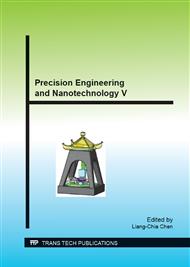p.161
p.167
p.172
p.178
p.182
p.187
p.192
p.196
p.201
Fabrication of Comb Shape of Leading Edge Wing of Dragonfly
Abstract:
Research on Micro air vehicle (MAV) has been carried out by many researchers to gather information in environmental monitoring, security and so on. When the earthquake, fire, smoke take place, it is difficult for human beings to investigate the detail because of dangerous condition. However, MAV has possibility to investigate the detail because MAV can fly freely around. Recently, dragonfly is highly focused by many researchers because dragonfly has high flight performances those are high efficiency flight, unintended acceleration, rapid turn and hovering. In general, these characteristics have root that wing is corrugation shape. We focus on microstructures on wing and its aerodynamic characteristics because there are many unique microstructures. We focused on micro spikes on dragonfly wing. Over three thousands of spikes exist on two sides of wing. The length and shape of spikes are 10 to 100 micron meters and oblique circular cone. It is important to clear the aerodynamic effect of the oblique circular cone. Artificial wing was fabricated by following processes. We fabricated micro spikes utilizing electro polishing. Fabricated micro spikes were set on plate utilizing micro spot bonding. We investigated the flow around the artificial wing and found that the flow around wing was controlled by micro spikes on wing. In this paper, we focused on comb shape of leading edge of wing. Comb shape is fabricated utilizing micro-EDM. We investigate flow characteristics of comb shape.
Info:
Periodical:
Pages:
182-186
Citation:
Online since:
August 2014
Authors:
Keywords:
Price:
Сopyright:
© 2015 Trans Tech Publications Ltd. All Rights Reserved
Share:
Citation:


